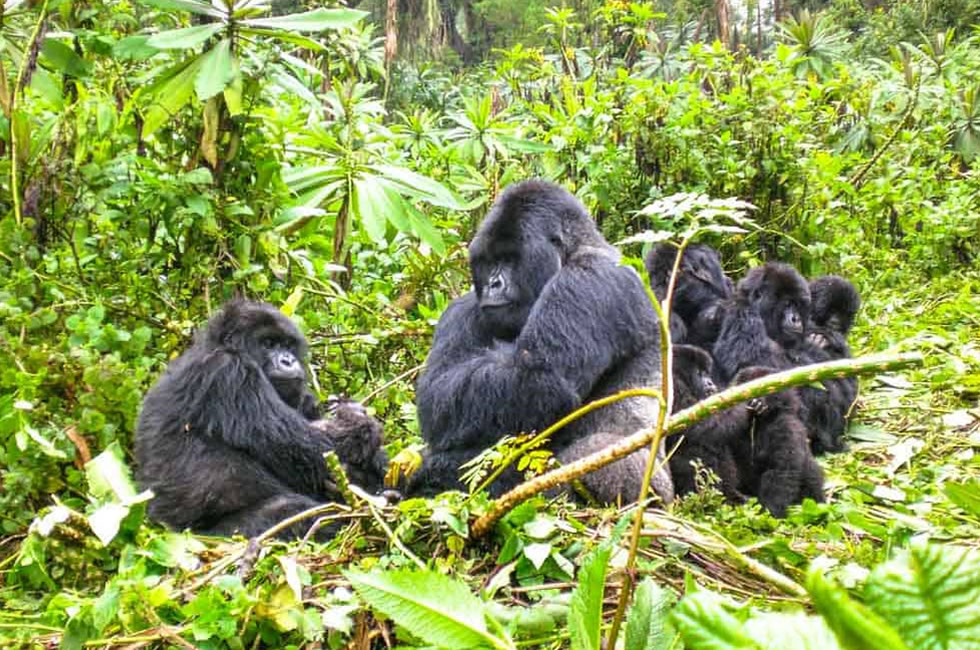Rwanda, often referred to as the “Land of a Thousand Hills,” is one of Africa’s most rewarding safari destinations, where breathtaking landscapes and rich biodiversity converge in a compact and accessible setting. In Africa, few countries offer both the thrill of a classic savannah safari and the once-in-a-lifetime experience of trekking endangered mountain gorillas in their natural habitat, and the Republic of Rwanda is one of them. From the open plains of Akagera National Park, home to lions, elephants, and giraffes, to the misty slopes of Volcanoes National Park, where gorillas roam freely, visitors can seamlessly blend two contrasting but complementary adventures.
This guide to combining wildlife safaris and gorilla trekking in Rwanda highlights how best to plan your journey, why one should go for the experience, when to travel, and what to expect from each experience. Whether you are a first-time traveler to Africa or an avid safari enthusiast seeking new horizons, Rwanda’s unique mix of wildlife encounters and immersive jungle treks promises an unforgettable adventure.
Why Combine Gorilla Trekking with a Safari?
Diverse experiences in one country
Gorilla trekking in the lush rain forests of Volcanoes National Park offers a close, emotional connection with one of the world’s most endangered primates. In contrast, a safari in Akagera National Park provides the thrill of seeing elephants, lions, giraffes, hippos, and rhinos roaming the savannah. Together, they create a complete African wildlife experience.
Compact travel distances
Unlike many African countries, where parks are spread far apart, Rwanda is small and easy to navigate. In less than a week, you can trek gorillas in the north and enjoy a big game safari in the east without long, exhausting transfers.
Balanced adventure
Gorilla trekking is physically demanding but short in duration (a few hours to a day). A safari, on the other hand, offers more relaxed game drives and boat cruises. Combining them balances adventure with leisure.
Unforgettable memories
Few destinations allow you to look into the eyes of a wild gorilla one day and watch a pride of lions on the savannah the next. The contrast and richness of experiences make Rwanda stand out as a truly unique safari destination
Where to go for a combined gorilla trekking and wildlife safari in Rwanda
Volcanoes National Park
Located in the northwestern region, Volcanoes National Park is the heart of gorilla tourism in Rwanda. Set against the dramatic Virunga Mountains, the park protects 12 habituated gorilla families that can be seen during a gorilla trekking experience. Treks begin from Kinigi and typically last 2–6 hours.
Note: Gorilla trekking permits cost USD 1500 per person, and this includes the park entrance fees, which are also used in supporting gorilla conservation and community projects.
Akagera National Park
Akagera is a protected area in the eastern part of Rwanda with a total coverage of 1,122 square kilometers along the international border with Tanzania. Named after the Kagera River, which flows along its eastern boundary, feeding into Lake Ihema, the park is known for protecting several wildlife species within its open savannah plains, woodlands, and rivers. Among the animals to see are: Elephants, lions, buffalo, zebras, giraffes, hippos, and crocodiles on boat safaris. Also, over 500 bird species, including fish eagles and shoebills
Travel tips for a combined experience
- Book your gorilla permits early — especially during peak seasons (June–September, December–February)
- Use a trusted tour operator who can handle logistics and transportation
- Pack for both rainforest and savannah — you’ll need layers, hiking boots, and lighter clothing
- Consider adding extra nights to enjoy slow travel and reduce fatigue
What to pack for the experience
- Waterproof walking boots and gaiters (trails are often muddy).
- Lightweight, breathable layers; a warm fleece for early mornings.
- Waterproof jacket and rain pants.
- Thin gloves, hat, sunscreen, insect repellent.
- Camera with telephoto lens for Akagera and close-focus lens for gorillas; spare batteries and memory cards.
- Small daypack, water bottle, snacks, basic first-aid, and any personal meds.
- Copies of permits, passport, and travel insurance details.
(Operators and park pages give detailed practical lists.)
Health, safety & practical tips
Vaccinations & malaria: check yellow fever and routine vaccinations; malaria prophylaxis is usually recommended for some areas — consult your travel clinic.
Fitness & trekking difficulty: gorilla treks vary from short (1–2 hours) to very strenuous (up to 6–8+ hours) depending on gorilla locations. Be realistic about fitness and altitude.
Respect the rules: keep distance, don’t touch, avoid flash photography when directed, and follow guide instructions — these rules protect both visitors and gorillas.
Best time to go for the experience
Dry seasons (June–September and December–February) are easiest for both gorilla treks (less muddy trails) and wildlife viewing (animals easier to spot). Shoulder months can offer fewer crowds and lower prices. (Park operator and tour pages list seasonal advice.)
Sample itinerary
Day 1: Arrive in Kigali, city cultural tour, and rest.
Day 2: Transfer to Volcanoes/sector for gorilla briefing.
Day 3: Gorilla trek in Volcanoes; transfer back to Kigali or stay near Musanze.
Day 4: Drive to Akagera (east) — late afternoon boat cruise or night at lodge.
Day 5: Full day game drive in Akagera; return to Kigali / depart.
(Variants add a Nyungwe stop or a Lake Kivu extension.)
Conclusion
A Rwanda itinerary that pairs Akagera’s open savannah with Volcanoes National Park’s intimate gorilla encounters offers extraordinary diversity in a single, efficient trip. With permits secured early, a sensible pace, and a commitment to responsible travel, you will experience one of Africa’s most inspiring conservation success stories while contributing directly to local communities and wildlife protection.


